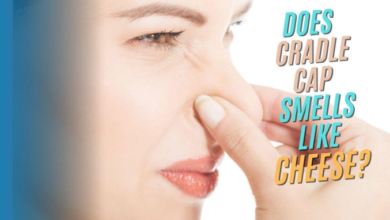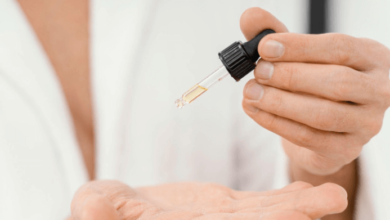Oxybutynin for Sweating: An Effective Solution for Hyperhidrosis

Hyperhidrosis, commonly known as excessive sweating, can significantly impact a person’s quality of life. Whether it occurs on specific body parts or affects the entire body, hyperhidrosis can lead to social embarrassment, discomfort, and emotional distress. Fortunately, medical advancements have introduced oxybutynin, a medication that has shown promising results in managing excessive sweating. In this article, we will explore the benefits, side effects, and overall effectiveness of oxybutynin for sweating.
1. Introduction: Understanding Hyperhidrosis
It affects millions of people worldwide and can occur in various forms, including primary focal hyperhidrosis and secondary generalized hyperhidrosis. Primary focal hyperhidrosis typically affects specific areas such as the underarms, palms, soles of the feet, and face, while secondary generalized hyperhidrosis involves excessive sweating throughout the body due to an underlying medical condition or medication side effects.
2. The Role of Oxybutynin in Managing Sweating
Oxybutynin belongs to a class of medications called anticholinergics, which work by blocking certain receptors in the body. Originally developed to treat overactive bladder symptoms, oxybutynin has gained recognition for its effectiveness in managing hyperhidrosis. By reducing the activity of sweat glands, oxybutynin helps control excessive sweating and provides relief to individuals experiencing the physical and emotional burden of hyperhidrosis.
3. How Does Oxybutynin Work?
Oxybutynin exerts its effects by inhibiting the action of acetylcholine, a neurotransmitter that plays a role in stimulating sweat production. By blocking the receptors that respond to acetylcholine, oxybutynin reduces the signals sent to the sweat glands, effectively decreasing sweat production. This mechanism of action makes oxybutynin a valuable tool in managing hyperhidrosis.
4. Dosage and Administration of Oxybutynin
The dosage of oxybutynin varies depending on the severity of hyperhidrosis and individual factors. It is crucial to consult a healthcare professional for personalized advice and guidance. Oxybutynin is available in various forms, including immediate-release tablets, extended-release tablets, and transdermal patches. The healthcare provider will determine the most suitable formulation and dosage regimen based on the patient’s specific needs and medical history.
5. Potential Side Effects of Oxybutynin for sweating
Like any medication, oxybutynin may cause certain side effects. Common side effects include dry mouth, blurred vision, constipation, drowsiness, and dry eyes. However, in rare cases, oxybutynin can cause more severe adverse effects, such as urinary retention, rapid heartbeat, confusion, or allergic reactions. It is important to promptly report any unusual symptoms to a healthcare professional for proper evaluation and guidance.
6. Precautions and Considerations
Before starting oxybutynin, it is essential to inform the healthcare provider about any existing medical conditions, allergies, or medications being taken. Oxybutynin may interact with certain medications, including other anticholinergics, leading to increased side effects. Additionally, individuals with narrow-angle glaucoma, urinary retention, or gastrointestinal disorders should exercise caution when using oxybutynin. A thorough medical evaluation and discussion with a healthcare professional will ensure the safe and appropriate use of oxybutynin.
7. Effectiveness of Oxybutynin in Treating Hyperhidrosis
Numerous studies have demonstrated the effectiveness of oxybutynin in managing hyperhidrosis. Clinical trials have shown that oxybutynin significantly reduces sweating and improves patients’ quality of life. It is particularly effective in cases of primary focal hyperhidrosis, with notable improvements reported in sweat reduction and the emotional impact associated with excessive sweating. Oxybutynin has become a valuable option for those seeking relief from the burdensome effects of hyperhidrosis.
8. Comparing Oxybutynin with Other Treatment Options
Oxybutynin is not the only treatment available for hyperhidrosis. Other options include topical antiperspirants, iontophoresis, Botox injections, and surgical interventions. Each treatment has its own advantages and considerations. While oxybutynin provides a systemic approach to managing excessive sweating, topical antiperspirants offer a more localized solution. Botox injections target specific areas, and surgical interventions provide long-term or permanent relief. The choice of treatment depends on individual preferences, severity of hyperhidrosis, and medical advice.
9. Frequently Asked Questions (FAQs)
Q1: Can oxybutynin completely stop sweating?
While oxybutynin can significantly reduce sweating, it may not completely stop sweating in all individuals. The effectiveness of oxybutynin varies from person to person, and some degree of sweating may still occur. However, many individuals experience substantial improvements in sweat reduction and overall quality of life with oxybutynin.
Q2: How long does it take for oxybutynin to work?
The onset of oxybutynin’s effects may vary. Some individuals may notice improvements within days, while others may require several weeks of consistent use before experiencing noticeable changes in sweating. Patience and adherence to the prescribed dosage regimen are key to achieving optimal results.
Q3: Is oxybutynin safe for long-term use?
Oxybutynin is generally considered safe for long-term use under medical supervision. Regular follow-up appointments with a healthcare professional are essential to monitor its effectiveness and assess any potential side effects. If any concerns arise during treatment, it is important to discuss them with the healthcare provider.
Q4: Can oxybutynin be used by children?
Oxybutynin can be prescribed to children for the management of hyperhidrosis. However, the dosage and administration should be determined by a pediatrician based on the child’s age, weight, and specific needs. Close monitoring is crucial to ensure the child’s safety and optimal therapeutic outcomes.
Q5: Can I combine oxybutynin with other treatments?
In some cases, a combination of treatments may be recommended to effectively manage hyperhidrosis. However, it is important to consult a healthcare professional before combining oxybutynin with other medications or interventions.
10. Conclusion
Excessive sweating, or hyperhidrosis, can significantly impact an individual’s well-being. Oxybutynin for sweating has emerged as an effective treatment option, providing relief from the physical and emotional burden of hyperhidrosis. By reducing sweat production, oxybutynin helps individuals regain control and improve their quality of life. However, it is essential to consult a healthcare professional for personalized advice, proper dosage, and to address any concerns or potential side effects.




